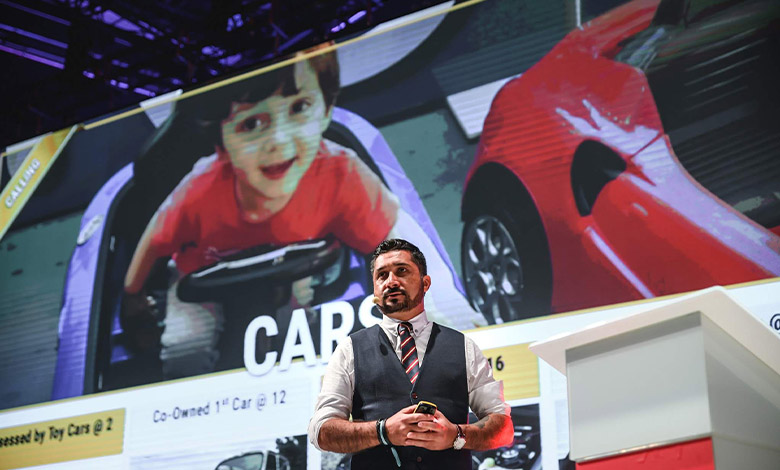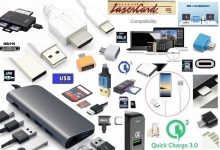
Today we speak with Antonio Ferreira about the innovations in Automotive industry. We talked about the trends, challenges, the future of the industry and alternative solutions.
1. Please can you give us a little background about yourself and your current role?
Hey there! I’m Antonio Ferreira. Automotive & Mobility Visionary. Technology & Supply Chain Expert. Future Trends & Innovations Disruptor. Independent Advisor & International Speaker.
Globally recognised technology and supply chain expert, futurist, entrepreneur and startup enthusiast. I am regularly sought out for my fresh perspective and brutally-honest style of accurate forecasting. Evangelising innovation with 20 years advisory experience in technology consulting, disruptive supply chains, and new business models. Continuously influencing future trends, working together with most Fortune 500 global companies, while investing and mentoring hundreds of startups worldwide that are leading that charge.
But here’s the deal, I’m just a normal down to earth guy. I really am. Yes, I work hard and I hustle to make my dreams a reality. But I definitely don’t live a normal, boring, mundane existence. I live a fulfilling and rewarding life. Today, I continue to provide advice and speak at workshops, conferences, and other events. I am addicted to startups. Plus, I am dedicated to disruptive innovation solutions and dragging complacent corporations into the future by helping other misfits build and grow their own dreams.
2.What automotive trends, in your opinion, are shaping the industry right now?
Automotive is in upheaval. Markets are shifting from product branding to service loyalty. Oil is a dead commodity. Customers want experiences, not car ownership. Automotive is missing the all important link that connects products to services. Autonomous driving will slash the cost of mobility, making this paradigm unstoppable. The future will be very different and most companies won’t survive with existing business models.
But I am not just watching from the stand. I am constantly involved in improving how the automotive world moves and gives credit where credit is due. Accelerating the mobility transition, upgrading to smart cities and distributing value fairly across all supply chains. A sustainable future cannot be built on just ownership models and I am empowering the visionaries to act.
Here’s a non-extensive list of trends I am personally tracking right now with clients (in no particular order):
AI Boom: Artificial Intelligence
V2X: Vehicle-to-X Communications
Machine Learning: Real-Time Machine Learning
Sense & Avoid: Sense & Avoid Technology
Predictive Vision: Predictive Machine Vision
AI Hacking: AI-Powered Automated Hacking
Cars as Interfaces: Human-Machine Interfaces
Better Batteries: Better EV/AV Batteries
Drone Delivery: Drone Delivery & Swarms
Share Economy: Sharing Economy & Lendership
Zero-Knowledge: Zero-Knowledge Proofs Go Commercial
5G: Faster Connectivity with 5G
Hidden Bias: Hidden Bias Leads To Big Problems
AI Marketplaces: Marketplaces for AI Algorithms and Tools
Bots: Productivity & Collaborative Bots
3D Printing: 3D Printing & Manufacturing
Trustless: Accountability & Trust By-Design
AVs: Autonomous Vehicles
Bounties: Bounty Programs
Charging Stations: Smart Charging Stations
AI Apps: Consumer-Grade AI Applications
Self-Incrimination: Digital Self-Incrimination
Ethical Manufacturing: Ethical Manufacturing Lifecycles
Hacktivism: Hacktivism on The Rise
Microdrones: Microdrone Services
Molecular Robotics: Molecular Robotics
Natural Language: Natural Language Generation & Understanding
Infrastructure: New Infrastructure Targets
Recognition: Personality & Character Recognition
Smart City: Smart City Initiatives
3. What is the future of automotive industry? How it will develop in the next years?
What innovative solutions do you use or plan to introduce in the following years?
Forecasting the automotive future is an art and science of disruptive game-changing.
Like Stephen Hawking put it “The past, like the future, is indefinite and exists only as a spectrum of possibilities.”.
One of my many 2020 resolutions was to spend a lot of my time dreaming big. Therefore, along the way, I planned on sharing everything I know about automotive technology forecasting and disrupting the future of smart cities, to help willing followers take a step closer to their own promised mobility land. Then COVID19 hit us like a bomb! And now oil is technically a worthless commodity. Still, we continue!
Over the last 20 years, I have disrupted the present by predicting the automotive future with eerie accuracy, with my resolution of ‘dream big or go home’ I have decided to also create a brighter mobility future. While some people are better at predictions than others, no one could have predicted this crisis.
Still, to be part of the disruptive game-changing elite that accurately predicts the automotive future, even post-COVID19, you need to be:
Cautious – nothing is certain in the automotive world
Humble – the reality of mobility is infinitely complex
Nondeterministic – what happens is not meant to be and does not have to happen for smart cities
Actively open-minded – past automotive beliefs are a hypothesis to be tested, not mobility future treasures to be protected
Intelligent – automotive knowledgeable with a need for cognition and intellectually curious for mobility
Reflective – automotive introspective and mobility self-critical
Numerate – comfortable with negative forecast numbers
Pragmatic – not wedded to any automotive idea or agenda
Analytical – capable of stepping back from the tip of your nose perspective and considering other automotive views
Insightful – value diverse automotive views and synthesize them into your own
Probabilistic – judge using many grades of automotive maybe
Thoughtful updater – when automotive facts change, change your mobility mind
Good intuitive psychologist – aware of the value of checking your thinking for automotive biases
A growth mindset – Believe it is possible to get better smart cities
Grit – Determined to keep at it however long it takes to improve the automotive industry
Personally I have the opinion that the automotive industry will slowly evolve into a subcategory of smart cities.
If today’s automotive industry want to thrive – both today and in the future – then it needs to solve challenges that affect the well-being of its citizens, which include, but are not limited to: resource wastage, cyber and street crime, preventive healthcare, and increasing sustainability. Only by doing so will they attract top-quality talent, and as a result, the attention of new businesses and investors alike. The good news is that today’s disruptive automotive innovations and technologies are more than ready to help cities become ‘smarter’ so they can tackle these big challenges – and increase the well-being of its citizens.
The automotive industry of today can be the foundation, upon which smart cities of tomorrow will be built.
As the cliche goes: every cloud has a silver lining. And for cities, that silver lining can be the disruptive cutting-edge innovations and technologies being developed by the automotive industry today, particularly IoT, machine learning and blockchain to name a few (which are already being used in the automotive world to make everything from supply chains to mobility, and even customer service more effective).
And just like automotive businesses which have (and still are) using these technologies to thrive, so can cities – to become better, safer, smarter and as a result, more well-equipped to support growing populations.
These are many automotive use-cases which show how today’s disruptive technologies – IOT, AI, etc. – can make cities smarter. In this equation, Blockchain can be the ‘innovation Big Data glue’ that binds all these technologies together.
These innovations, in essence, help by collecting valuable data which they make sense of themselves, and use the information within it to take immediate action which saves resources, predicts harmful incidents and overall helps the city management do their job with ease, which is to uplift its citizens by providing them their basic rights.
And as a result, everyone wins.
The politicians, for making the cities they were entrusted with safer and smarter. The companies and businesses, as the cities in which they operate become less risky. And most importantly, the citizens, whose daily lives become easier, and them, safer.











